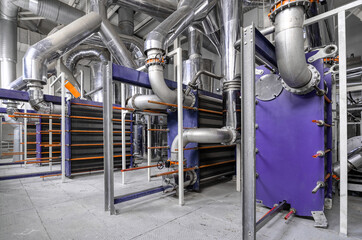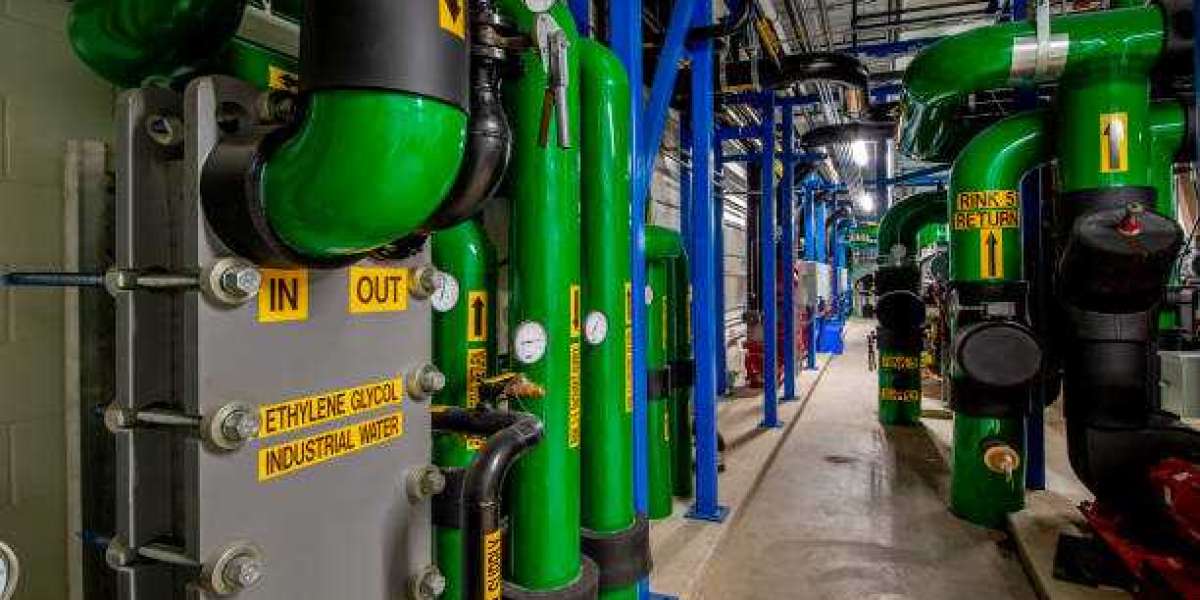The plate fin heat exchanger is a specialized kind of warmness exchanger that capabilities a completely unique design able to managing excessive-efficiency heat transfer in compact areas. Its lightweight, multi-fin structure makes it ideal for industries that require compactness without compromising thermal overall performance. This kind of warmth exchanger is extensively utilized in aerospace, cryogenics, chemical processing, and other traumatic environments.
Often evolved through precision engineering firms, those devices are important to maintaining temperature control and operational performance. In the broader production surroundings, an commercial products producer regularly includes plate fin fashions in their thermal structures portfolio due to their unrivaled performance in high-stress and low-temperature programs.

How Plate Fin Heat Exchangers Work
Principle of Operation
The basic operating precept of a plate fin heat exchanger is much like other types of heat exchangers—it permits the switch of warmth between or more fluid streams. However, what sets it aside is its finned production and stacked layers, which significantly increase the surface vicinity available for warmth transfer. The fluids pass through alternating layers, separated via thin metallic plates and fins, improving the price of thermal trade.
Fin Configuration and Flow Paths
Fins may be configured in numerous geometries, inclusive of instantly, wavy, or offset strip, relying at the software necessities. These fins serve twin purposes: they no longer most effective growth heat switch floor region but additionally sell turbulent flow, which improves thermal performance. The design also supports multiple glide paths, such as crossflow, counterflow, and parallel go with the flow arrangements, bearing in mind flexible engineering answers.
Key Features of Plate Fin Heat Exchangers
High Surface Area-to-Volume Ratio
One of the defining functions of the plate fin warmness exchanger is its high floor location-to-quantity ratio. This attribute allows speedy and green warmness transfer even in compact setups. It’s a major cause why those exchangers are selected for structures in which space constraints are widespread, inclusive of in plane or cell equipment.
Lightweight and Compact Design
Despite their excessive capacity for heat trade, plate fin devices stay extremely lightweight. The use of aluminum or chrome steel of their production enables reap each low weight and excessive corrosion resistance. This function makes them appropriate for each cell and stationary thermal structures.
Versatility in Application
Because of their modular creation and scalable overall performance, plate fin warmth exchangers are used in quite a few temperature and pressure levels. They can manage gases, liquids, or combined-section flows, which makes them flexible sufficient for use in the whole thing from natural gas liquefaction plants to plane engine cooling systems.
Common Applications Across Industries
Aerospace and Defense
In the aerospace enterprise, plate fin heat exchangers are utilized in plane environmental manipulate structures, gasoline structures, and hydraulic circuits. Their light-weight construction and capability to address intense strain differentials make them indispensable in this area.
Cryogenic Processing
Cryogenic industries make full-size use of plate fin exchangers for gasoline liquefaction and separation processes. The design permits more than one streams to trade warmth concurrently, optimizing the power stability and decreasing operational fees.
Petrochemical and Chemical Processing
Plate fin warmness exchangers are also critical additives inside the chemical and petrochemical sectors, where they're utilized in procedures concerning high pressures and occasional temperatures. Their resistance to corrosion and chemical reactions makes them ideal for coping with competitive fluids.
Renewable Energy Systems
With the upward thrust of renewable power systems, particularly in hydrogen and liquefied natural gasoline (LNG) infrastructure, plate fin exchangers are being included to manage thermal masses correctly. They help improve power healing rates and decrease the carbon footprint of industrial operations.
Advantages Over Traditional Heat Exchangers
Enhanced Thermal Performance
Compared to shell and tube or other traditional heat exchangers, plate fin gadgets provide significantly higher thermal efficiency due to their fin-superior surfaces. This method much less electricity is needed to achieve desired temperature modifications, which contributes to fee financial savings over time.
Customizable Design
Another key advantage is their noticeably customizable nature. Engineers can layout a plate fin exchanger to fit the precise thermal necessities, flow prices, and pressure drops of a gadget. This stage of design freedom allows for higher integration into current methods.
Multiple Stream Capability
Unlike many traditional designs, plate fin heat exchangers can manipulate multiple fluid streams inside a unmarried unit. This makes them mainly beneficial in techniques wherein simultaneous heating and cooling are required.
Challenges and Limitations
Fouling Sensitivity
One important challenge is their sensitivity to fouling. Because of the slim drift passages and excessive fin density, any particulate infection or fluid with a excessive fouling tendency can block the flow paths, decreasing performance extensively. Regular protection and fluid filtration are necessary to hold the device going for walks correctly.
High Manufacturing Costs
The complex layout and need for precision production make contributions to higher preliminary fees as compared to different sorts of warmness exchangers. The investment, however, is frequently justified by using long-time period performance and overall performance.
Cleaning and Maintenance
Cleaning a plate fin warmth exchanger can be extra tough than cleaning a shell and tube model. The problematic layout requires specialized system and procedures to make certain all go with the flow channels are clear without destructive the internal additives.
Materials Used in Construction
Aluminum Alloys
Aluminum is a common fabric due to its tremendous thermal conductivity, light-weight nature, and corrosion resistance. It is mainly preferred in aerospace and automobile packages.
Stainless Steel
For environments concerning corrosive fluids or better pressures, stainless-steel versions are desired. They provide sturdiness and resistance to chemical attack, albeit at a higher weight and cost.
Other Alloys
Depending at the software, different alloys inclusive of copper-nickel or titanium may be used. The preference of fabric performs a essential position in determining the warmth exchanger's performance, lifespan, and compatibility with one of a kind fluids.
Design Considerations
Pressure and Temperature Ratings
When designing a plate fin warmth exchanger, engineers ought to consider the most strain and temperature the unit will enjoy. Overdesigning in this place can result in pointless expenses, at the same time as underdesigning might also result in untimely failure.
Flow Rate Optimization
Proper calculation of flow prices for all streams concerned is important to achieving most desirable thermal performance. Uneven go with the flow distribution can bring about warm spots or inefficient heat switch.
Thermal Expansion and Stress Management
The shape must also accommodate thermal growth and mechanical stress throughout operation. Special welding or brazing techniques are used to sign up for the plates and fins in a way that lets in for expansion even as retaining structural integrity.
Future Outlook of Plate Fin Heat Exchangers
As energy performance and compact layout become more vital in worldwide engineering practices, the demand for plate fin warmth exchangers is predicted to rise. Advances in production technologies, which include 3D printing and automatic brazing, are making it possible to supply extra complex and green devices at lower prices.
Additionally, the shift closer to sustainable strength resources and electrification of transportation structures similarly underscores the relevance of these exchangers. Whether integrated right into a renewable power venture or a part of a thermal management machine in electric vehicles, plate fin warmness exchangers are poised to play an more and more critical position in future improvements.
Conclusion
The plate fin warmth exchanger represents a pretty green and space-saving solution for present day thermal control demanding situations. From aerospace to petrochemical industries, its adaptability and performance make it a pass-to option for engineers and designers. While there are challenges including fouling and value, the blessings in terms of heat transfer efficiency and compactness often outweigh the restrictions.
As the needs of enterprise evolve, mainly in regions led via technological development and environmental focus, the position of a nicely-geared up industrial products producer in providing and innovating with plate fin era will remain critical. With continuous enhancements in materials and layout procedures, the future for plate fin warmness exchangers seems both dynamic and promising.











